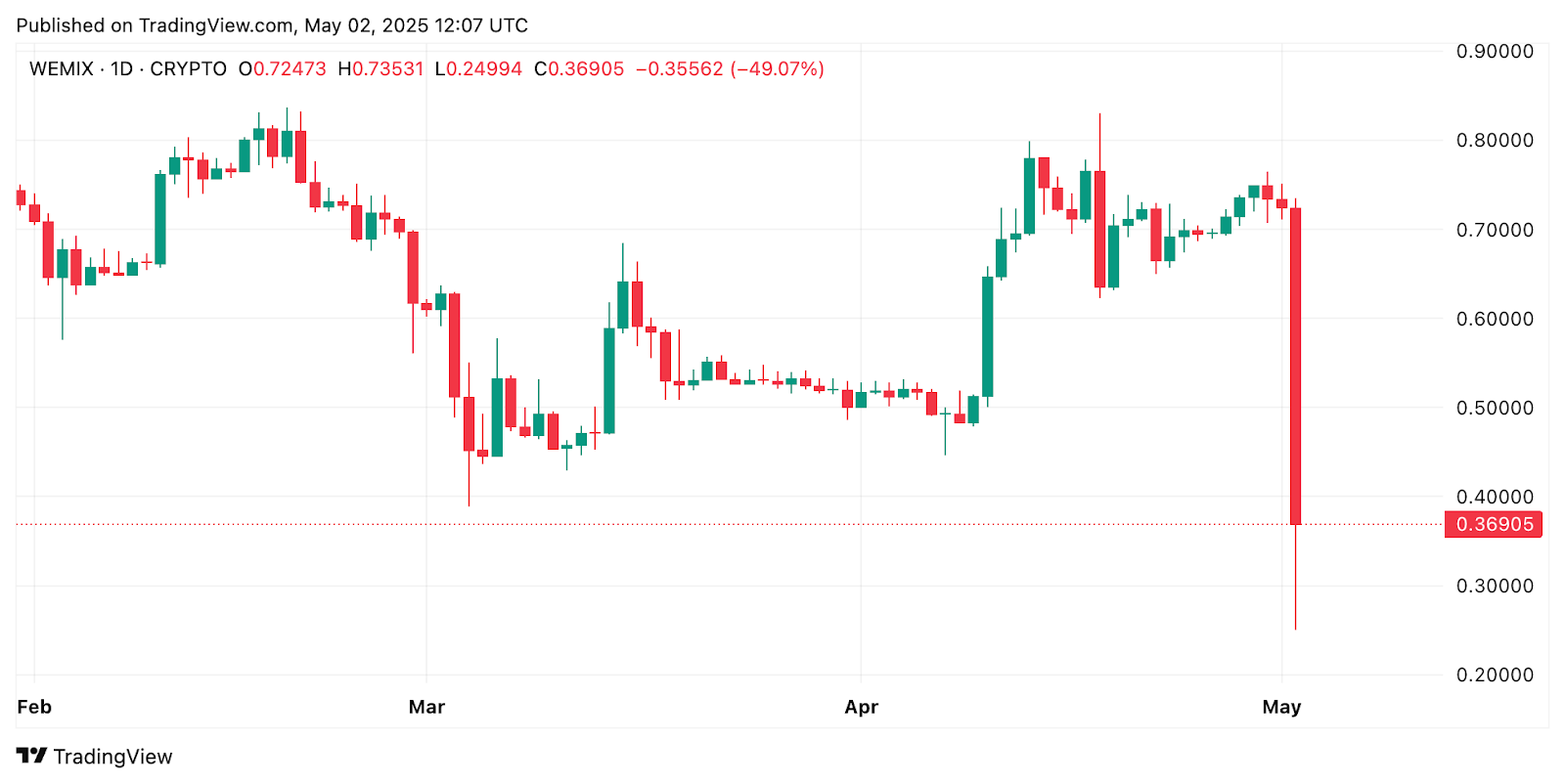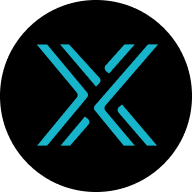
LUNA
Terra price
$0.18700
+$0.0010000
(+0.53%)
Price change for the last 24 hours

How are you feeling about LUNA today?
Share your sentiments here by giving a thumbs up if you’re feeling bullish about the coin or a thumbs down if you’re feeling bearish.
Vote to view results
Terra market info
Market cap
Market cap is calculated by multiplying the circulating supply of a coin with its latest price.
Market cap = Circulating supply × Last price
Market cap = Circulating supply × Last price
Circulating supply
Total amount of a coin that is publicly available on the market.
Market cap ranking
A coin's ranking in terms of market cap value.
All-time high
Highest price a coin has reached in its trading history.
All-time low
Lowest price a coin has reached in its trading history.
Market cap
$128.73M
Circulating supply
687,660,230 LUNA
63.75% of
1,078,518,456 LUNA
Market cap ranking
--
Audits

Last audit: Mar 23, 2023
24h high
$0.19290
24h low
$0.18350
All-time high
$20.0000
-99.07% (-$19.8130)
Last updated: May 28, 2022
All-time low
$0.13530
+38.21% (+$0.051700)
Last updated: Apr 7, 2025
Terra Feed
The following content is sourced from .

🐍Salazar.eth 🦇🔊
Confluence often signals value.
With Soul pioneering limitless lending through an interface layer that connects lending markets across chains, it’s only a matter of time before more sharp minds start paying attention.
If you’re curious about how it works, this is a great read to dive deeper into Soul.

Route 2 FI
The space has changed a lot since the crazy Luna and Fantom days in 2021, with high yield lasting for months. DeFi got way more traction than we ever imagined from institutional players and retail users, especially in decentralized lending.
As an example, you can see @MorphoLabs and @aave's latest integrations aiming to create a bankless financial system accessible to billions of people globally.
However, there is a drawback: the entire lending space operates in isolation, with liquidity becoming increasingly fragmented as new protocols emerge across different chains.
I've recently been working with @0xSoulProtocol, and they introduced me to an exciting solution they're building: a cross-chain and cross-protocol lending protocol aggregator. While many projects have tried addressing the cross-chain dilemma, this might be the first time a protocol makes users lend and borrow across multiple protocols seamlessly.
At its core, Soul Protocol is a new DeFi primitive, not just another lending protocol, but an infrastructure layer connecting multiple lending markets. For the first time, you can deposit collateral in one protocol and borrow from another, even across entirely different blockchains.
Think of it like this: instead of being limited to choosing between Aave on Ethereum, Morpho on Arbitrum, or Kamino on Solana, Soul gives you simultaneous access to all of them through one unified interface, without manually bridging or moving assets. This means aggregated borrowing power, enhanced capital efficiency, and fewer assets sitting idle in isolated pools.
You can deposit assets in one ecosystem and leverage them across others to maximize returns, execute complex multi-chain strategies, or even capture arbitrage opportunities instantly.
Here’s a practical example: imagine a profitable arbitrage opportunity on BNB Chain, but your collateral is deposited on Aave Ethereum via Soul.
Rather than withdrawing your collateral, bridging it, and incurring significant delays and costs, Soul enables you to borrow directly from Venus on BNB Chain using your existing Aave Ethereum collateral. You swiftly execute the arbitrage trade, repay the borrowed amount, and keep the profit, all without ever moving your original assets.
Soul Protocol has been in development for around two years, built by a team that previously developed Hatom Protocol, the leading DeFi protocol on MultiversX.
Currently, Soul Protocol is running a points campaign designed to encourage community participation in stress-testing their protocol during the Testnet phase.
You can find a detailed breakdown of tasks here:
They've also announced their Public Sale, introducing an innovative and fair model where the final valuation of the project is defined based on community participation. All Public Sale tokens will be unlocked at TGE, which is nice.
The $SO token powers governance, boosted yields, and revenue sharing, with a fair public launch set for May 16. 25% of the total $SO supply allocated to the community in the public round. No low float, high FDV.
You can find more information about this here:
By removing barriers between chains and protocols, Soul can find PMF by creating a unified, borderless financial ecosystem and redefine the way we borrow, lend, and manage capital across the entire DeFi landscape.

5.95K
0

Shiro
Route2Fi is an OG here. 🫡
He's seen a lot of things change in DeFi, and yet even after all these years, he still sees a fragmented DeFi.
Here is his statement: the entire lending space operates in isolation.
And yes, that's undeniable.
That's why he understands how @0xSoulProtocol could change things.
Soul isn’t just another lending protocol—it’s a cross-chain, cross-protocol lending aggregator.
It lets users deposit collateral on one chain (e.g., Aave on Ethereum) and borrow from another (e.g., Venus on BNB Chain), all without bridging or moving funds manually.
Soul is connecting multiple lending markets, Soul is connecting liquidity, Soul is a new DeFi Primitive. 💎
I've mentioned Soul here already:
🔗
There is an incentivized Testnet & the Sale is coming soon 🪂:
🔗
NFA & DYOR 🫡

Route 2 FI
The space has changed a lot since the crazy Luna and Fantom days in 2021, with high yield lasting for months. DeFi got way more traction than we ever imagined from institutional players and retail users, especially in decentralized lending.
As an example, you can see @MorphoLabs and @aave's latest integrations aiming to create a bankless financial system accessible to billions of people globally.
However, there is a drawback: the entire lending space operates in isolation, with liquidity becoming increasingly fragmented as new protocols emerge across different chains.
I've recently been working with @0xSoulProtocol, and they introduced me to an exciting solution they're building: a cross-chain and cross-protocol lending protocol aggregator. While many projects have tried addressing the cross-chain dilemma, this might be the first time a protocol makes users lend and borrow across multiple protocols seamlessly.
At its core, Soul Protocol is a new DeFi primitive, not just another lending protocol, but an infrastructure layer connecting multiple lending markets. For the first time, you can deposit collateral in one protocol and borrow from another, even across entirely different blockchains.
Think of it like this: instead of being limited to choosing between Aave on Ethereum, Morpho on Arbitrum, or Kamino on Solana, Soul gives you simultaneous access to all of them through one unified interface, without manually bridging or moving assets. This means aggregated borrowing power, enhanced capital efficiency, and fewer assets sitting idle in isolated pools.
You can deposit assets in one ecosystem and leverage them across others to maximize returns, execute complex multi-chain strategies, or even capture arbitrage opportunities instantly.
Here’s a practical example: imagine a profitable arbitrage opportunity on BNB Chain, but your collateral is deposited on Aave Ethereum via Soul.
Rather than withdrawing your collateral, bridging it, and incurring significant delays and costs, Soul enables you to borrow directly from Venus on BNB Chain using your existing Aave Ethereum collateral. You swiftly execute the arbitrage trade, repay the borrowed amount, and keep the profit, all without ever moving your original assets.
Soul Protocol has been in development for around two years, built by a team that previously developed Hatom Protocol, the leading DeFi protocol on MultiversX.
Currently, Soul Protocol is running a points campaign designed to encourage community participation in stress-testing their protocol during the Testnet phase.
You can find a detailed breakdown of tasks here:
They've also announced their Public Sale, introducing an innovative and fair model where the final valuation of the project is defined based on community participation. All Public Sale tokens will be unlocked at TGE, which is nice.
The $SO token powers governance, boosted yields, and revenue sharing, with a fair public launch set for May 16. 25% of the total $SO supply allocated to the community in the public round. No low float, high FDV.
You can find more information about this here:
By removing barriers between chains and protocols, Soul can find PMF by creating a unified, borderless financial ecosystem and redefine the way we borrow, lend, and manage capital across the entire DeFi landscape.

10.86K
16

Shiro
Route2Fi is an OG here. 🫡
He's seen a lot of things change in DeFi, and yet even after all these years, he still sees a fragmented DeFi.
Here is his statement: the entire lending space operates in isolation.
And yes, that's undeniable.
That's why he understands how @0xSoulProtocol could change things.
Soul isn’t just another lending protocol—it’s a cross-chain, cross-protocol lending aggregator.
It lets users deposit collateral on one chain (e.g., Aave on Ethereum) and borrow from another (e.g., Venus on BNB Chain), all without bridging or moving funds manually.
Soul is connecting multiple lending markets, Soul is connecting liquidity, Soul is a new DeFi Primitive. 💎
I've mentioned Soul here already:
🔗
There is an incentivized Testnet & the Sale is coming soon 🪂:
🔗
NFA & DYOR 🫡

Route 2 FI
The space has changed a lot since the crazy Luna and Fantom days in 2021, with high yield lasting for months. DeFi got way more traction than we ever imagined from institutional players and retail users, especially in decentralized lending.
As an example, you can see @MorphoLabs and @aave's latest integrations aiming to create a bankless financial system accessible to billions of people globally.
However, there is a drawback: the entire lending space operates in isolation, with liquidity becoming increasingly fragmented as new protocols emerge across different chains.
I've recently been working with @0xSoulProtocol, and they introduced me to an exciting solution they're building: a cross-chain and cross-protocol lending protocol aggregator. While many projects have tried addressing the cross-chain dilemma, this might be the first time a protocol makes users lend and borrow across multiple protocols seamlessly.
At its core, Soul Protocol is a new DeFi primitive, not just another lending protocol, but an infrastructure layer connecting multiple lending markets. For the first time, you can deposit collateral in one protocol and borrow from another, even across entirely different blockchains.
Think of it like this: instead of being limited to choosing between Aave on Ethereum, Morpho on Arbitrum, or Kamino on Solana, Soul gives you simultaneous access to all of them through one unified interface, without manually bridging or moving assets. This means aggregated borrowing power, enhanced capital efficiency, and fewer assets sitting idle in isolated pools.
You can deposit assets in one ecosystem and leverage them across others to maximize returns, execute complex multi-chain strategies, or even capture arbitrage opportunities instantly.
Here’s a practical example: imagine a profitable arbitrage opportunity on BNB Chain, but your collateral is deposited on Aave Ethereum via Soul.
Rather than withdrawing your collateral, bridging it, and incurring significant delays and costs, Soul enables you to borrow directly from Venus on BNB Chain using your existing Aave Ethereum collateral. You swiftly execute the arbitrage trade, repay the borrowed amount, and keep the profit, all without ever moving your original assets.
Soul Protocol has been in development for around two years, built by a team that previously developed Hatom Protocol, the leading DeFi protocol on MultiversX.
Currently, Soul Protocol is running a points campaign designed to encourage community participation in stress-testing their protocol during the Testnet phase.
You can find a detailed breakdown of tasks here:
They've also announced their Public Sale, introducing an innovative and fair model where the final valuation of the project is defined based on community participation. All Public Sale tokens will be unlocked at TGE, which is nice.
The $SO token powers governance, boosted yields, and revenue sharing, with a fair public launch set for May 16. 25% of the total $SO supply allocated to the community in the public round. No low float, high FDV.
You can find more information about this here:
By removing barriers between chains and protocols, Soul can find PMF by creating a unified, borderless financial ecosystem and redefine the way we borrow, lend, and manage capital across the entire DeFi landscape.

9.17K
4

CoinDesk
A bitcoin (BTC) breakout earlier this week has traders eyeing the $100,000 level in the coming days, a euphoric trade that could be short-lived as May’s seasonality approaches.
“Historically, the next couple of months have been weak for financial markets, with many investors abiding by the Sell in May and Walk Away adage,” Jeff Mei, COO at BTSE, told CoinDesk in a Telegram message.
“That being said, markets have significantly underperformed over the last few months, but this year could buck the trend, with Bitcoin hitting $97K and other growth stocks coming back over the last few weeks. This past week's weak GDP numbers coming out of the US indicate some risk, as another report of negative GDP growth next quarter would indicate a recession, but rate cuts could lead to a rebound as well,” Mei added.
The adage “Sell in May and go away” is a long-standing seasonal saying in traditional financial markets.
It suggests that investors should sell their holdings at the beginning of May and return to the market around November, based on the belief that equity markets underperform during the summer due to lower trading volumes, reduced institutional activity, and historical returns data.
The phrase dates back to the early days of London Stock Exchange and was originally “Sell in May and go away, come back on St. Leger’s Day,” referencing a mid-September horse race.
What data shows
Historically, U.S. stock markets have shown weaker performance from May through October than from November through April, leading to the strategy becoming a seasonal rule-of-thumb for some investors.
Bitcoin also shows recurring seasonal patterns, often influenced by macro cycles, institutional flows, and retail sentiment. CoinGlass data show the asset’s May performance has been negative or muted recently.
In 2021, BTC dropped 35%, one of its worst months that year. In 2022, May was again negative, with a 15% drop amid Luna’s collapse. In 2023, BTC was flat to mildly positive, reflecting muted volatility.BTC popped up 11% last May and ended May 2019 up 52% — a standout performance from all months following 2018, when crypto markets are generally thought to have matured after that year’s altcoin cycle.
Red May months are followed by more declines in June, the data shows, with four of the past five June months ending in red.
These patterns don’t guarantee future performance, they suggest that crypto markets may be increasingly reacting to the same macro and seasonal sentiment as equities, especially as more institutional capital enters the space.
Sign of caution?
Traders may grow cautious based on historical price seasonality and fading momentum after strong Q1 rallies. Altcoins, especially meme coins, may be particularly vulnerable to pullbacks, given their recent hype-driven rallies and speculative flows.
“Since 1950, the S&P 500 has delivered an average gain of just 1.8% from May through October, with positive returns in about 65% of those six-month periods—well below the stronger performance seen from November through April,” Vugar Usi Zade, COO at crypto exchange Bitget, told CoinDesk in a Telegram message.
Over the past 12 years, average Q2 returns (April–June) for BTC have stood at 26%, but with a median of only 7.5% — a sign of outlier-driven performance and recurring volatility.
By Q3 (July–September), the average return drops to 6%, and the median turns slightly negative, suggesting a pattern of post-Q2 fatigue or consolidation, Zade added, citing data.
“This seasonality overlap suggests caution heading into May. Historically, Q4 marks Bitcoin’s strongest seasonal period, with an average return of +85.4% and a median of +52.3%, whereas Q3 tends to deliver more muted or negative outcomes,” Zade said.
In short, while Wall Street calendars don’t bind crypto, market psychology still responds to narratives, and “Sell in May” could become a self-fulfilling prophecy — especially if technicals start to crack and sentiment flips.

2.14K
0

Subli 🦇🔊
"Lend on one chain, borrow on the other chain"
@0xSoulProtocol promise is simple as that
I can only agree with @Route2FI
While @aave & @MorphoLabs create a new bankless financial system in the backend, already integrated into international financial service provider like @Ledger & @worldcoin, liquidity is currently spread accross hundred of chains !
Unification of this liquidity is not a nice-to-have, but should be considered as a "must-to-have" !
While @Contango_xyz unifies lending protocols for one-click leverage, @0xSoulProtocol is going to abstract blockchain by unifying liquidity

Route 2 FI
The space has changed a lot since the crazy Luna and Fantom days in 2021, with high yield lasting for months. DeFi got way more traction than we ever imagined from institutional players and retail users, especially in decentralized lending.
As an example, you can see @MorphoLabs and @aave's latest integrations aiming to create a bankless financial system accessible to billions of people globally.
However, there is a drawback: the entire lending space operates in isolation, with liquidity becoming increasingly fragmented as new protocols emerge across different chains.
I've recently been working with @0xSoulProtocol, and they introduced me to an exciting solution they're building: a cross-chain and cross-protocol lending protocol aggregator. While many projects have tried addressing the cross-chain dilemma, this might be the first time a protocol makes users lend and borrow across multiple protocols seamlessly.
At its core, Soul Protocol is a new DeFi primitive, not just another lending protocol, but an infrastructure layer connecting multiple lending markets. For the first time, you can deposit collateral in one protocol and borrow from another, even across entirely different blockchains.
Think of it like this: instead of being limited to choosing between Aave on Ethereum, Morpho on Arbitrum, or Kamino on Solana, Soul gives you simultaneous access to all of them through one unified interface, without manually bridging or moving assets. This means aggregated borrowing power, enhanced capital efficiency, and fewer assets sitting idle in isolated pools.
You can deposit assets in one ecosystem and leverage them across others to maximize returns, execute complex multi-chain strategies, or even capture arbitrage opportunities instantly.
Here’s a practical example: imagine a profitable arbitrage opportunity on BNB Chain, but your collateral is deposited on Aave Ethereum via Soul.
Rather than withdrawing your collateral, bridging it, and incurring significant delays and costs, Soul enables you to borrow directly from Venus on BNB Chain using your existing Aave Ethereum collateral. You swiftly execute the arbitrage trade, repay the borrowed amount, and keep the profit, all without ever moving your original assets.
Soul Protocol has been in development for around two years, built by a team that previously developed Hatom Protocol, the leading DeFi protocol on MultiversX.
Currently, Soul Protocol is running a points campaign designed to encourage community participation in stress-testing their protocol during the Testnet phase.
You can find a detailed breakdown of tasks here:
They've also announced their Public Sale, introducing an innovative and fair model where the final valuation of the project is defined based on community participation. All Public Sale tokens will be unlocked at TGE, which is nice.
The $SO token powers governance, boosted yields, and revenue sharing, with a fair public launch set for May 16. 25% of the total $SO supply allocated to the community in the public round. No low float, high FDV.
You can find more information about this here:
By removing barriers between chains and protocols, Soul can find PMF by creating a unified, borderless financial ecosystem and redefine the way we borrow, lend, and manage capital across the entire DeFi landscape.

7.12K
4
LUNA calculator


Terra price performance in USD
The current price of Terra is $0.18700. Over the last 24 hours, Terra has increased by +0.54%. It currently has a circulating supply of 687,660,230 LUNA and a maximum supply of 1,078,518,456 LUNA, giving it a fully diluted market cap of $128.73M. At present, the Terra coin holds the 0 position in market cap rankings. The Terra/USD price is updated in real-time.
Today
+$0.0010000
+0.53%
7 days
-$0.00220
-1.17%
30 days
+$0.0016000
+0.86%
3 months
-$0.10730
-36.46%
Popular Terra conversions
Last updated: 05/03/2025, 00:54
| 1 LUNA to USD | $0.18720 |
| 1 LUNA to PHP | ₱10.4178 |
| 1 LUNA to EUR | €0.16524 |
| 1 LUNA to IDR | Rp 3,087.07 |
| 1 LUNA to GBP | £0.14096 |
| 1 LUNA to CAD | $0.25818 |
| 1 LUNA to AED | AED 0.68759 |
| 1 LUNA to VND | ₫4,868.66 |
About Terra (LUNA)
The rating provided is an aggregated rating collected by OKX from the sources provided and is for informational purpose only. OKX does not guarantee the quality or accuracy of the ratings. It is not intended to provide (i) investment advice or recommendation; (ii) an offer or solicitation to buy, sell or hold digital assets; or (iii) financial, accounting, legal or tax advice. Digital assets, including stablecoins and NFTs, involve a high degree of risk, can fluctuate greatly, and can even become worthless. The price and performance of the digital assets are not guaranteed and may change without notice. Your digital assets are not covered by insurance against potential losses. Historical returns are not indicative of future returns. OKX does not guarantee any return, repayment of principal or interest. OKX does not provide investment or asset recommendations. You should carefully consider whether trading or holding digital assets is suitable for you in light of your financial condition. Please consult your legal/ tax/ investment professional for questions about your specific circumstances.
Show more
- Official website
- Block explorer
About third-party websites
About third-party websites
By using the third-party website ("TPW"), you accept that any use of the TPW will be subject to and governed by the terms of the TPW. Unless expressly stated in writing, OKX and its affiliates ("OKX") are not in any way associated with the owner or operator of the TPW. You agree that OKX is not responsible or liable for any loss, damage and any other consequences arising from your use of the TPW. Please be aware that using a TPW may result in a loss or diminution of your assets.
Terra FAQ
What is the difference between Terra (LUNA) and Terra Classic (LUNC)?
Terra (LUNA) and Terra Classic (LUNC) are two independent blockchains resulting from the collapse of the Terra ecosystem in 2022. Terra is the new fork, while TerraClassic is the original blockchain.
What is Terra vesting?
Terra vesting refers to a mechanism implemented to control the trading of LUNA tokens received through airdrops until a specified date. The vesting period is in place to prevent users’ who were airdropped the Terra 2.0 token from dumping the tokens on the open market.
What is the LUNA price prediction?
While it’s challenging to predict the exact future price of LUNA, you can combine various methods like technical analysis, market trends, and historical data to make informed decisions.
How much is 1 Terra worth today?
Currently, one Terra is worth $0.18700. For answers and insight into Terra's price action, you're in the right place. Explore the latest Terra charts and trade responsibly with OKX.
What is cryptocurrency?
Cryptocurrencies, such as Terra, are digital assets that operate on a public ledger called blockchains. Learn more about coins and tokens offered on OKX and their different attributes, which includes live prices and real-time charts.
When was cryptocurrency invented?
Thanks to the 2008 financial crisis, interest in decentralized finance boomed. Bitcoin offered a novel solution by being a secure digital asset on a decentralized network. Since then, many other tokens such as Terra have been created as well.
Will the price of Terra go up today?
Check out our Terra price prediction page to forecast future prices and determine your price targets.
Monitor crypto prices on an exchange
Watch this video to learn about what happens when you move your money to a crypto exchange.
Disclaimer
The social content on this page ("Content"), including but not limited to tweets and statistics provided by LunarCrush, is sourced from third parties and provided "as is" for informational purposes only. OKX does not guarantee the quality or accuracy of the Content, and the Content does not represent the views of OKX. It is not intended to provide (i) investment advice or recommendation; (ii) an offer or solicitation to buy, sell or hold digital assets; or (iii) financial, accounting, legal or tax advice. Digital assets, including stablecoins and NFTs, involve a high degree of risk, can fluctuate greatly. The price and performance of the digital assets are not guaranteed and may change without notice.
OKX does not provide investment or asset recommendations. You should carefully consider whether trading or holding digital assets is suitable for you in light of your financial condition. Please consult your legal/tax/investment professional for questions about your specific circumstances. For further details, please refer to our Terms of Use and Risk Warning. By using the third-party website ("TPW"), you accept that any use of the TPW will be subject to and governed by the terms of the TPW. Unless expressly stated in writing, OKX and its affiliates (“OKX”) are not in any way associated with the owner or operator of the TPW. You agree that OKX is not responsible or liable for any loss, damage and any other consequences arising from your use of the TPW. Please be aware that using a TPW may result in a loss or diminution of your assets. Product may not be available in all jurisdictions.
OKX does not provide investment or asset recommendations. You should carefully consider whether trading or holding digital assets is suitable for you in light of your financial condition. Please consult your legal/tax/investment professional for questions about your specific circumstances. For further details, please refer to our Terms of Use and Risk Warning. By using the third-party website ("TPW"), you accept that any use of the TPW will be subject to and governed by the terms of the TPW. Unless expressly stated in writing, OKX and its affiliates (“OKX”) are not in any way associated with the owner or operator of the TPW. You agree that OKX is not responsible or liable for any loss, damage and any other consequences arising from your use of the TPW. Please be aware that using a TPW may result in a loss or diminution of your assets. Product may not be available in all jurisdictions.
LUNA calculator































Socials